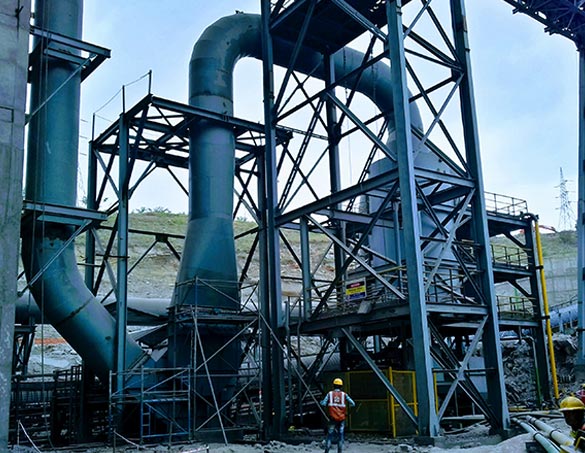- Home
- Company
- Industries
- Pharmaceutical Industries
- Food and Chemical Industries
- Agro industry
- Cement Industries
- Foundry Industry
- Petrochemical Industry
- Detergent Industry Insights: Sparking Innovation
- Steel & Non-Ferrous Industries
- Distillary & Brewery Industries
- Biscuit and Confectionary
- Fertilizer Industry
- Polymer Industries
- Systems
- Products
- Life At Rajdeep
- Contact Us

WET SCRUBBER
Rajdeep’s bespoke collection of wet scrubbers scrubbers for Air Pollution Control stands as a testament to its commitment to offering an exhaustive range of solutions, tailored to efficiently tackle any dust control or air purification challenge, regardless of scale. Among its distinguished offerings, the Dynamic Scrubber shines for its superior dust collection prowess. Boasting an impressive efficiency rate of over 99.5% for particles in the 1-2 micron range, this scrubber is perfectly designed to handle general dust collection tasks across environments burdened with medium to high dust concentrations. This makes it an exceptionally cost-effective and versatile choice for a wide array of air quality management needs.
How Wet Scrubbers Work
Water stands as the predominant solvent for extracting inorganic impurities. At its simplest, wet scrubbers employ a method where water is contained within a metal or composite vessel. Contaminated gas is directed through this water, enabling the absorption of impurities, following which, the purified gas is released from the scrubber.
Beyond water, alternative liquids can serve as effective absorbing agents for a wide array of contaminants. By altering the chemical makeup of these absorbing solutions, their overall electrical charge can be adjusted to be strongly positive, negative, or neutral. This variability is crucial because different pollutants possess distinct charges, necessitating a specifically matched liquid in wet scrubbers to bind with and eliminate the contaminant from the gas optimally. Among various solutions, a caustic solution (sodium hydroxide, NaOH) is prevalently utilized for neutralizing acid gases (such as HCl and SO2), with sodium carbonate (Na2CO3) and calcium hydroxide (slaked lime, Ca[OH]2) also being common choices.
Wet Scrubbing of Particulate Matter
Wet scrubbers function by trapping particulate matter within liquid droplets, which are subsequently collected. The pollutants within the gases dissolve or get absorbed by these liquid droplets. To ensure the purity of the gas exiting the scrubber, any droplets present in the incoming gas must be extracted from the outgoing gas stream using a device known as a mist eliminator. Moreover, the liquid that has been used for scrubbing needs to be processed either for safe discharge or for recycling within the facility.
The efficiency with which a wet scrubber captures particulate matter typically scales with the energy invested in operating the scrubber. Hence, the effectiveness of a wet scrubber not only depends on its design but also significantly on the operation of a well-designed mist eliminator, which is critical for achieving high removal rates.
In scenarios where the air stream carries both particulate matter and gaseous pollutants, wet scrubbers often stand out as the sole air pollution control technology capable of eliminating both types of pollutants through a single process.
Packed-Bed Wet Scrubbers
Wet scrubbers trap particulate matter within liquid droplets, which are subsequently collected. The pollutants within the gases dissolve or get absorbed by these liquid droplets. To ensure the purity of the gas exiting the scrubber, any droplets present in the incoming gas must be extracted from the outgoing gas stream using a device known as a mist eliminator. Moreover, the liquid used for scrubbing must be processed either for safe discharge or recycling within the facility.
The efficiency with which a wet scrubber captures particulate matter typically scales with the energy invested in operating the scrubber. Hence, the effectiveness of a wet scrubber not only depends on its design but significantly on the operation of a well-designed mist eliminator, which is critical for achieving high removal rates.
In scenarios where the air stream carries both particulate matter and gaseous pollutants, wet scrubbers often stand out as the sole air pollution control technology capable of eliminating both types of pollutants through a single process.
Advantages:
- Proven design.
- Very low cost for high efficiency.
- Integral self-cleaning fan.
- Low maintenance.
- Low water consumption.
Where Are Wet Scrubbers Used?
- Food and agriculture.
- Electroplating.
- Acid plants.
- Fertilizer plants.
- Steel mills.
- Asphalt plants.
